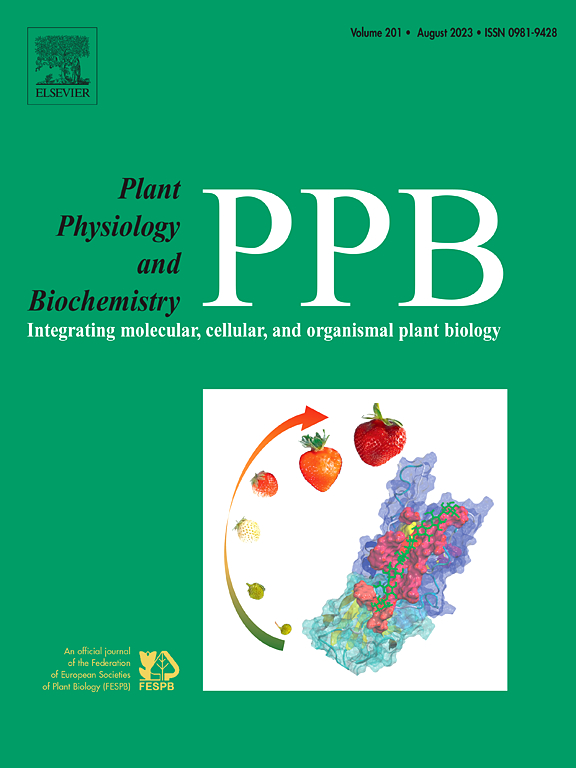Overexpression of the patatin-related phospholipase A gene, PgpPLAIIIβ, in ginseng adventitious roots reduces lignin and ginsenoside content while increasing fatty acid content
IF 6.1
2区 生物学
Q1 PLANT SCIENCES
引用次数: 0
Abstract
The patatin-related phospholipase AIII (pPLAIII) gene family plays a crucial role in regulating cell elongation, cell wall composition, and lipid metabolism in plants, making it a promising target for agricultural and commercial innovations. This study provides a comprehensive functional analysis of PgpPLAIIIβ in Panax ginseng, a medicinal plant of substantial economic importance. Overexpression of PgpPLAIIIβ led to significant morphological changes, including shorter, thicker roots, and an 8% reduction in lignin content, while cellulose levels remained unaffected. The reduced lignification was attributed to the downregulation of key lignin biosynthetic genes and decreased hydrogen peroxide accumulation. A yeast two-hybrid assay identified a CCCH-type zinc finger protein as a potential PgpPLAIIIβ interactor, pointing to a mechanism that may underlie the changes in root structure and lignin deposition. Metabolite analysis revealed a 7.6% increase in total free fatty acid content, with notable increases in palmitic and linoleic acids, alongside a 28% reduction in ginsenoside levels, linked to the downregulation of triterpenoid biosynthetic genes. These findings demonstrate that PgpPLAIIIβ is a key regulator of root architecture, lignin composition, and secondary metabolite balance in ginseng. The metabolic engineering of PgpPLAIIIβ could be a powerful strategy to improve root traits, optimize lignin deposition, and enhance metabolite profiles, ultimately boosting the commercial and medicinal value of ginseng.

求助全文
约1分钟内获得全文
求助全文
来源期刊
CiteScore
11.10
自引率
3.10%
发文量
410
审稿时长
33 days
期刊介绍:
Plant Physiology and Biochemistry publishes original theoretical, experimental and technical contributions in the various fields of plant physiology (biochemistry, physiology, structure, genetics, plant-microbe interactions, etc.) at diverse levels of integration (molecular, subcellular, cellular, organ, whole plant, environmental). Opinions expressed in the journal are the sole responsibility of the authors and publication does not imply the editors'' agreement.
Manuscripts describing molecular-genetic and/or gene expression data that are not integrated with biochemical analysis and/or actual measurements of plant physiological processes are not suitable for PPB. Also "Omics" studies (transcriptomics, proteomics, metabolomics, etc.) reporting descriptive analysis without an element of functional validation assays, will not be considered. Similarly, applied agronomic or phytochemical studies that generate no new, fundamental insights in plant physiological and/or biochemical processes are not suitable for publication in PPB.
Plant Physiology and Biochemistry publishes several types of articles: Reviews, Papers and Short Papers. Articles for Reviews are either invited by the editor or proposed by the authors for the editor''s prior agreement. Reviews should not exceed 40 typewritten pages and Short Papers no more than approximately 8 typewritten pages. The fundamental character of Plant Physiology and Biochemistry remains that of a journal for original results.

 求助内容:
求助内容: 应助结果提醒方式:
应助结果提醒方式:


